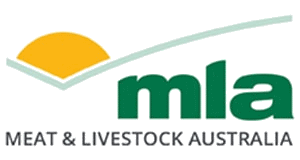P.PSH.1246 - From method to market - unlocking ecosystem service opportunities for livestock producers
What ecosystem services payments are available for Queensland livestock producers?
| Project start date: | 21 February 2020 |
| Project end date: | 31 May 2024 |
| Publication date: | 04 April 2025 |
| Project status: | Completed |
| Livestock species: | Grain-fed Cattle, Grass-fed Cattle, Sheep, Goat, Lamb |
| Relevant regions: | Queensland |
|
Download Report
(3.9 MB)
|
|
Summary
The Method to Market (M2M) project sought to identify and help overcome technical and economic barriers to grazier participation in ecosystem services markets. Results and findings of the project will aid decision making around carbon farming by individual landholders; assist Australia’s red meat industry to mitigate carbon and natural capital risk; as well as the inevitable progression of brand claims. The project was a collaboration between the Queensland Department of Agriculture and Fisheries, Queensland Department of Environment, Science and Innovation, Cibo Labs, Integrity Ag, The University of Queensland, Agri Escondo, Bush Agribusiness, BooBook Ecological Consulting and Meat & Livestock Australia.
Objectives
Review available literature on existing scientific methods for livestock producers to be remunerated for providing ecosystem services to the community whilst producing livestock.
Consider enhancements to existing methods to improve producer adoption.
Develop new scientific methods for livestock producers to be remunerated for providing ecosystem services to the community whilst producing livestock.
Key findings
Carbon emission reduction pathways that align most closely to production goals should be implemented for both economic and sustainability objectives.
In the Queensland case studies, pathways for net emissions reduction did not currently have the capacity to indefinitely neutralise production emissions but could do so for a period of time.
Improvements in production efficiency indicators – mortality, sale weight and reproduction success – were quantified to an associated reduction in emissions intensity for SEQ/CQ enterprises.
The emission abatement options currently available are varied in their suitability for different production systems and can be antagonistic to production. They are also limited in their potential abatement on-farm under current feasible ACCU methodologies.
Project pre-conceptions were that poor landholder participation in ecosystem services markets could be solved by ‘fixing and developing methods and aiding technical solutions that bring down the cost of participation’, however, stakeholder survey results revealed ecosystem services markets to be a ‘wicked problem’, requiring broad systemic change if widespread uptake in grazing systems is to be achieved.
Benefits to industry
Real-life case studies from this project contributed to the identification, revision, improvement and/or development of current and proposed carbon market, natural capital and carbon insetting methods.
Extensive environmental and productivity condition field data were collected that contributed to the development and validation of spatial methods to cost-effectively measure pasture biomass, tree biomass and native vegetation condition; both at state and national scales.
Novel capacity for the Queensland Department of Agriculture and Fisheries to impartially contribute to industry engagement on the topics of carbon, biodiversity and natural capital opportunities in productive grazing systems.
Future research
Globally recognised and locally relevant food and fibre carbon and ‘nature positive’ product labelling standards and formalisation of carbon insetting methods under industry agreed certification standards.
Collection and sharing of site-based data to support the national capacity to demonstrate zero deforestation claims, capacity for long-term soil carbon improvement, as well as fit-for-purpose spatial tools to scale up capacity for advisors to cost effectively assess the cost/benefit of participation in ecosystem services markets and sustainable red meat product claims.
Identification throughout grazing systems of northern Australia of the impact of retaining native woody vegetation in the form of shelter belts on pasture production, livestock production, carbon sequestration, water quality, property scale landscape attributes, biodiversity, and mitigating nature related risk. Tools to design placement of woody vegetation to maximise benefits and minimise negative impacts are required.
Identification of a 'workable' level of data accuracy and associated error for emission baselining to allow for meaningful and actionable engagement in low emission supply chains or business management.


